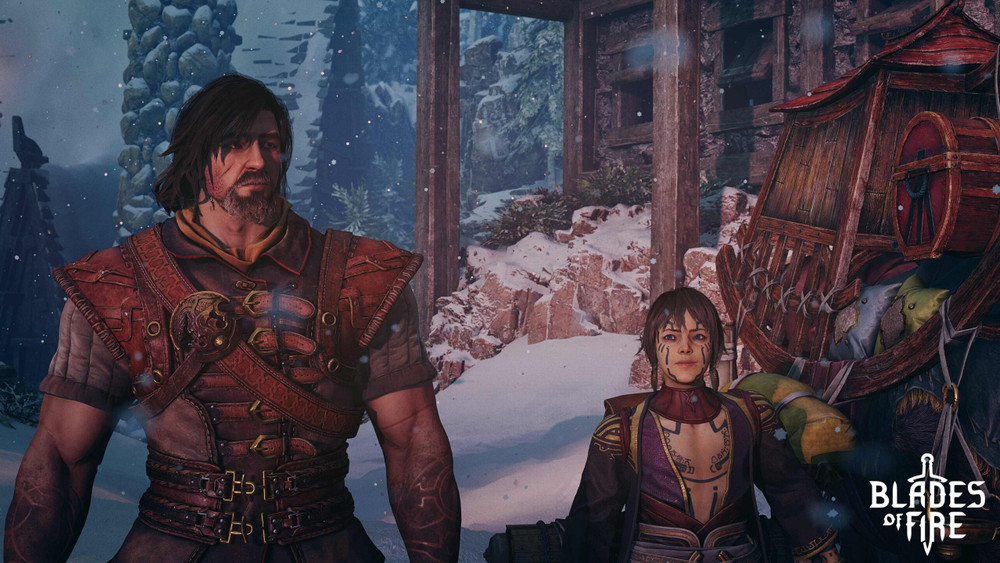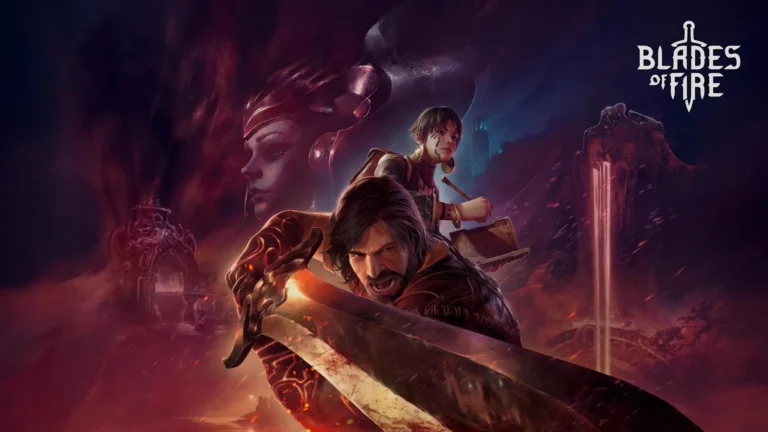Before founding MercurySteam, several of its senior developers were part of Rebel Act Studios, the team behind the 2001 cult classic Severance: Blade of Darkness. Although that game received strong critical reception, it ultimately suffered from limited marketing and a punishing level of difficulty, which led to disappointing sales and the studio’s early closure. Over time, however, Blade of Darkness earned cult status, often recognized today as a precursor to the Soulslike genre. Now, nearly 25 years later, MercurySteam revisits its roots with the release of Blades of Fire.
Gameplay: A Soulslike-Adventure with a Forged Identity
Blades of Fire blends action-adventure mechanics with elements of Soulslike and Metroidvania design. Central to the experience is the art of blacksmithing—crafting, maintaining, and upgrading swords to survive the harsh world. Players explore interconnected environments, battling enemies, gathering resources, crafting new blades, unlocking new areas, and progressing through the world. The full gameplay loop spans between 30 to 50 hours, depending on the selected difficulty.
Difficulty Levels
The game features three difficulty tiers:
- Bronze (Easy)
- Iron (Normal)
- Steel (Hard)
Even on Bronze, the game presents a decent challenge. Difficulty can be adjusted at any time, and the most noticeable differences lie in enemy damage output, resistance to counterattacks, and the resource cost for sword repairs and stamina recovery, which are higher on easier modes.
Setting: A World Built on Steel and Myth

The game is set in a fantasy world where humanity has inherited the lost legacy of a race of giants known as the Forgers—the creators of Steel. With the knowledge of forging steel, humanity rose to power and subdued other races. Now, in a world ruled by Queen Nerea, any sword raised against her is magically turned to stone.
You play as Aran, a seasoned warrior raised in the art of combat, who shares a mysterious past with the queen. Aran’s mission: assassinate Queen Nerea. He’s joined by Adso, a young scholar and storyteller who documents the journey and provides guidance—an obvious homage to the narrative structure of God of War (2018) and the dynamic between Kratos and Atreus.
Narrative & Characterization: Familiar Archetypes
While Blades of Fire presents some dramatic story moments, its narrative doesn’t aim to be its main driving force. The characters are thinly developed, mostly serving as archetypes from standard fantasy storytelling. Though the game tries to echo more memorable video game narratives, it falls short in making a lasting impression. Not every game needs a profound story, and Blades of Fire embraces that, choosing to focus on gameplay and atmosphere instead.
Presentation: A Glimpse of the Past
From a visual and mechanical perspective, Blades of Fire feels reminiscent of early 2010s cross-gen titles (circa 2013–2014). This isn’t just about the art direction or graphics—it also reflects in the level design, camera movement, and protagonist animation. The game walks a fine line between being retro and feeling dated, though fans of classic action-adventure titles may find comfort in that familiarity.
Final Thoughts
Blades of Fire is an earnest attempt to recapture the spirit of a lost era in action-adventure gaming, combining classic design with modern Soulslike sensibilities. While its story may not leave a lasting impact, the game’s combat, world design, and sword-forging mechanics offer a compelling enough experience—especially for players nostalgic for games that challenge both your reflexes and patience.
